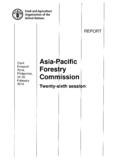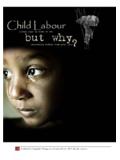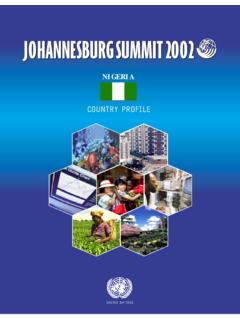Transcription of Over the last half a century, Asia and the Pacific …
1 Over the last half a century, asia and the Pacific region has shown remarkable resolve and results in providing plentiful inexpensive supplies of food and improving the quality of life for its citizens. But the future challenges of ensuring food and nutrition security for all its people remain equally daunting. At the same time, rapidly increasing demand for animal protein and the concomitant changes in the nature of production and marketing systems for livestock products are placing huge pressures on the natural resource base, biophysical environment and human, animal and ecosystem health in the region. To discuss effective ways of informing policy choices to promote sustainable livestock sector development, an international policy forum was organized in Bangkok on 16-17 August 2012.
2 The forum brought together critical thinkers, policy makers and practitioners from around the region and a number of international agencies and networks. The group strongly recommended creating a neutral regional policy platform for facilitating regional cooperation, knowledge exchange, policy dialogue and catalytic action in pursuit of shared goals. This publication presents the discussions and conclusions of the policy forum and brings together a rich body of background analytical work prepared in support of the Ahuja is Livestock Policy Officer at the FAO Regional Office for asia and the Pacific , Bangkok.
3 ThailandAsian livestockChallenges, opportunities and the responseProceedings of an international policy forum held in Bangkok, Thailand, 16-17 August 2012 RAP Publication 2012/28 Editor: Vinod AhujaAhuja, Vinod (Editor). 2013. Asian Livestock: Challenges, opportunities and the response. Proceedings of an International Policy Forum held in Bangkok, Thailand, 16-17 August 2012, Animal Production and Health Commission for asia and the Pacific , International Livestock Research Institute and Food and Agriculture Organization of the United designations employed and the presentation of material in this information product do not imply the expression of any opinion whatsoever on the part of the Food and Agriculture Organization of the United Nations (FAO)
4 Concerning the legal or development status of any country, territory, city or area or of its authorities, or concerning the delimitation of its frontiers or boundaries. The mention of specific companies or products of manufacturers, whether or not these have been patented, does not imply that these have been endorsed or recommended by FAO in preference to others of a similar nature that are not views expressed in this information product are those of the author(s) and do not necessarily reflect the views of 978-92-5-107454-1 All rights reserved. FAO encourages reproduction and dissemination of material in this information product.
5 Non-commercial uses will be authorized free of charge, upon request. Reproduction for resale or other commercial purposes, including educational purposes, may incur fees. Applications for permission to reproduce or disseminate FAO copyright materials, and all queries concerning rights and licences, should be addressed by e-mail to or to the Chief, Publishing Policy and Support Branch, Office of Knowledge Exchange, Research and Extension, FAO, Viale delle Terme di Caracalla, 00153 Rome, Italy. FAO 2013iiiContentsForeword ivAcknowledgements viAbbreviations and acronyms viiContributors and participants ixBackground and summary 1 Vinod Ahuja and Purvi Mehta Opening and keynote addresses 11 Welcome address 13 Ayuth HarintharanonOpening Address 14 Man Ho SoAddress by the guest of honor: Livestock development in ASEAN countries 16 Yukol Limlamthong Livestock industrialization in asia .
6 Growth, scaling up, competitiveness 20 and outlook for smallholders Nipon PoapongsakornHealth at the Livestock Policy Interface 26 Jimmy SmithLivestock and Natural Resources 32 Henning Steinfeld Special contribution to the proceeding 36 Long Term Food Security in Developing asia 36 D. Roland-Holst and Songsak Sriboonchitta Technical papers 51 Structural changes in the Indian dairy sector 53 Anjani Kumar, Joshi and Jongeneel Hog farming in transition: The case of China 74 Kevin Chen and Jimin WangFeed and Fodder Challenges for asia and the Pacific 82 Harinder MakkarPoverty, food security, livestock and smallholders: Issues and options 98 for asia and the Pacific region Vinod Ahuja and Steve StaalLivestock resources and environmental issues in asia 108 Benjamin Henderson and Henning SteinfeldHuman health risks from the human-animal interface in asia 121 Joachim Otte and Delia GraceAnnexure 1.
7 Good practices: List of presentations 161ivForewordIt is perhaps no exaggeration to say that livestock is central to some of the major challenges the world faces today and how we deal with these challenges will have far reaching implications on the well-being of future generations. The demand for livestock products is growing rapidly and this trend is expected to continue in the foreseeable future. Given the resource intensity of modern livestock production systems, this growth is putting tremendous pressure on global natural resources and the biophysical environment. This challenge is perhaps most severe for asia and the Pacific region considering that the region houses more than 60 percent of the world s 925 million hungry people with high levels of undernutrition and malnutrition.
8 The majority of these poor people live in rural areas and rely on agricultural activities for their food and income. For many of them, livestock income is essential for buying inputs for crop production, paying for school fees, covering medical bills, and overcoming temporary food shortages. Animals also serve as a capital reserve for the good and bad times in life when a family has to face large expenses such as a wedding or a medical emergency. While undernutrition and malnutrition concerns remain high on the policy agenda in the region, there are also emerging concerns about unhealthy consumption patterns stemming from poor awareness about proper nutrition and rapid emergence of non-communicable diseases and vitamin and mineral deficiencies.
9 At the same time, recent years have seen the emergence of an anti-livestock global narrative. Livestock has been blamed for emerging diseases, global warming, environmental pollution and continuing food insecurity and deprivation due to the competition for resources between food and feed. Abstracting from the blame game, it can be said that while the emerging narrative does have elements of truth, the claims and counter claims remain much too general and generalized and of little practical significance. For example, while it is true that excessive consumption of animal products may increase the risk of heart and other non-communicable diseases, it is also true that children in many developing countries do not receive enough meat and milk in their diets and may grow up physically and mentally compromised by inadequate protein intake.
10 Similarly, while it is true that intensive livestock production systems are creating nutrient overloads and deficits in different parts of the world, it is also true that animals are crucial in completing nutrient cycles, particularly in mixed crop-livestock farming systems. Policy emphasis on enhanced livestock productivity in these systems can add value to natural resources and food systems in many ways. Debates often become polarized depending on the ideologies, experiences and perspectives of those making the arguments. Rarely does one observe balanced dialogue that is so essential for making more pragmatic choices in diverse contexts.













